The Process of Drawing – Learn the Fundamentals
Most beginners in drawing and painting miss essential points with regards to learning how to draw.
Also the material mentioned in this post are not mentioned in drawing books or online drawing courses. This post will be ideal for beginners and advanced artists who want to become more comfortable with the drawing journey. Comfort means a more rewarding experience and not too many frustrations!
The reason for this article is due to the increased number of paintings and drawings that I have been doing lately with the Paintology drawing app. In particular, the live streams where I have been making a drawing in a live drawing sessions of about an hour or so. Not only that, I have been using my finger to do more and more of the drawings and found it to be just as effective as a stylus.
Here are some of the artworks, you can find the links to the Paintology channel at the end of the post.

One needs to keep in mind that if you are new to a skill, you will have a vague idea of how to develop these skills. A lot of speculation and hearsay will be part of your mindset when embarking on this skill. Maybe you saw your friend or a family member who excelled in art. Perhaps someone told you that picking up this skill was a beautiful experience or maybe you just want to prove to yourself that you could do it.
Please do not go for another popular reason that many choose and convince themselves to not take up drawing. This is the belief that they have no skill or talent to draw and hence justified for not pursuing it. It is a very poor excuse not to do drawing because of this reasoning since it is based entirely on a false position about drawing. You should be honest with yourself and say something like, ‘I don’t have time’, ‘I don’t have an interest in the subject’, ‘I haven’t given myself enough time and effort to draw’. These are all valid reasons and not the one that easily buries and sweeps it under the carpet. If you fall into that category of dismissing the skill as requiring exceptional ability which you have none, you need to rethink what your position is when it comes to other subjects that requires skill. You may hold this viewpoint which extends to other skillsets and thus sabotage yourself from pursuing skills that you could potentially find rewarding and enjoy.
The important point that we can take away from this, is to keep our minds open and understand that you need to develop essential skills that will require attention, focus and drive. If you don’t intend to go to a class, you need to rely on your own passion and drive to get you to the high level. To get you started in this direction, I strongly recommend that you read the post on the DPD of acquiring new skills.
Artists often showcase their artwork on youtube and many other online resources where drawing and painting is made to look easy. It can inspire beginners to start drawing, however, on the other hand it can also be a bit of a disillusion to beginners when they start on the journey of drawing. Their thinking revolves around a blank canvas and then somehow reaching the level of the final art piece that they have seen online. This is indeed a tall order for anyone who is starting out to draw and you should go into it with a blank mindset.
Many beginners lack the true understanding or appreciation of the whole process of drawing and painting. They are continuously bombarded by a high level of artworks found online such as Youtube and make it look so easy. They try their hand on drawing or painting briefly and find that it is more challenging than they had anticipated. Thus, many will drop off and give up after their first attempt.
Teachers vary by their experience, ability and their art of communicating clear ideas to the students. Students come with a ‘baggage’ such as preconceptions and also preconceived ideas. This problem is further exacerbated due to teachers not possessing the full body of knowledge as well as the beginners having no clue to the drawing process.
The ideal situation is a knowledgeable teacher as well as a practitioner of art and someone who continuously pushes the boundaries of art. The ideal student would be one that drops their preconceived ideas and notions that have been shaped by the artwork they have seen online and opinions of many other beginner artist.
In order to get into drawing and painting, the whole process of taking something from A to B is the drawing process. The ‘void’ or the inbetween is the drawing process and can be easily misunderstood or relayed incorrectly by both parties, ie. students and teachers. It can be replete of wordage that is commonly passed around in the art world without any true understanding or appreciation. This paves the way for art to shift towards an academic direction without any real intent of training good artists. Although, the classic and popular book by Betty Edwards changed much of our thinking. However, in the modern world that we live in and the rapid rise of the digital medium, we are at a juncture where drawing and painting can be distilled into something that everyone can understand.
The Paintology drawing app from the Google play store is one such app that harnesses the power of technology and drives both students and teachers in the right direction. You can read more on this app by visiting some links provided at the end of this post.
When it comes to art, many have probably come across all of the following thoughts and sayings…
- Drawing requires patience and lots of practice
- You need to practice to get to the level of the artists you admire
- You need to understand fundamentals and core skills in drawing
- You need to practice diligently and every day to improve your drawing
- You need to have the right tools
All of the above creates an atmosphere that drawing requires intensive hard work and the pleasure of it is somehow lost in this initial journey.
One can then ask the question, ‘Why would anyone want to pursue drawing then?
I am somewhat surprised that anyone would want to pursue drawing when the above advice is smattered all around the internet. Although, some tutorials can be found where the artist attempts to take on the bull by it’s horn and attempt at teaching art. However, these training materials are all too common and do not leverage the power of the digital drawing mediums such as the phone. What the apps manage to do is completely at odds with what drawing and painting is in it’s true form. Many dive into these digital drawing apps and are led by the tools of the app that fulfills the gap of having to do anything manual. This unfortunately removes the student from having to learn any core skills in art and they only become accustomed to drawing with digital tools. Eventually, they are so dependent on the tools of the app or software and they end up questioning where the ‘traditional’ aesthetics lie within their artwork. Here is an amusing Quora question and answer you can read which provides in a few sentences what I meant by digital tools.
Why is there few photorealistic drawings in the digital medium compared to traditional medium
Fortunately, this is now being addressed by the Paintology drawing app.
Download the free Paintology app from the Google play store.
https://play.google.com/store/apps/details?id=com.paintology.lite
When it comes to teaching, the problem is that many art teachers have not addressed or pondered this ‘void’ that takes a student to go from A to B with a sense of real direction or path. The learning process involves taking mini steps to get to the first set of goals, then moving to the next. There are very little advice on how to go through all these min steps and what constitutes these mini steps. In this way, the student will feel there is a real journey ahead to get to their final goals and will not drop off from the course early.
The goal is to take a student to go through all the way from A to B. A is the starting point of the student, consider it as a blank canvas, and B is the satisfactory conclusion or drawing which they will strive towards.
The process of learning can be challenging due to the unique ways that individuals learn a new skill and this needs to be taken into account. To do this, one needs to lay the groundwork of why they do what they do, and what this encompasses and the progress they will make. I am not specifically talking about going directly from A to B, because this would not be an insightful way to look at learning to draw. I am specifically talking about the smaller steps that are taken to go from A to B keeping in mind the end goal. Many teachers will breakdown the components of drawing but not with the objective of achieving the end goal but to offer explanations of the mechanisms involved in the drawing. This really serves no purpose because it does not explain the overall archetype that brings all of this together.
My approach is to show the underlying process that relates to ANY drawing or painting.
I will try to explain what the drawing process entails, so that the beginner student has a much better idea on how to go about drawing and painting. It will also empower the beginner artist to ‘enjoy this beautiful journey of drawing and painting that many find rewarding.
Having had a good number of years with drawing in both traditional and digital, I will provide some insights into what drawing involves. Distilling the process of drawing finally came to me as I was doing finger drawings on the phone for the live video streams on the Youtube channel.
https://www.youtube.com/@Paintology/streams
The Process of Drawing
Drawing is a process and most beginners will not have a good understanding of what this involves except that it just requires lots of practice. One needs to know that this journey will lead to something constructive, useful and rewarding.
I am here to say that this process which will be revealed to you is the most rewarding factor in the journey of drawing for numerous reasons.
So what exactly is the process of drawing?
The process is what I call building up the drawing in one step at a time. You may think that was obvious but the mechanism behind it is not fully acknowledged and appreciated. It will apply to the creation of all drawing process except for the creation of hyper realistic drawings. It is also the reason why I find painting and drawing a breeze compared to most people and can draw more rapidly than many.
The best way to explain this is to do it with a real drawing that I make using the Paintology drawing app. You could use other drawing apps but the Paintology app was designed with the exact mechanisms of teaching fundamental art skills.
Let’s reexamine the popularity of the digital medium where it has attracted millions of fans worldwide. The reason for its popularity are due to a number of factors and not necessarily for the right reasons.
Firstly, the entry level required for digital drawing is very low. Someone with a reasonable knowledge of handling menu items of a phone or tablet can become comfortable in it with little time. Since many now possess a phone, this opens the doors to many people drawing on their phone.
Secondly, the tools have been designed to make drawing significantly easier than, say drawing in the traditional medium. For example, you don’t have to create shapes manually, you can create an oval shape and then fill it with color and add the pupils, eye-lashes etc. Blending is easily done for the portraiture drawing because there are tools for that. Try to do the same thing in the traditional way and it will require a much higher degree of skills. This is because you are doing it all manually and you don’t have these similar set of tools in traditional as you do in digital.
One can assume that digital artists will lack the fundamental core skills of art which a traditional artist possesses by overcoming these obstacles. You could argue that they also have a higher degree of control over their creations because they are not limited by tools.
With real drawing examples, I have proven that transitioning to the digital medium is possible with a limited number of tools just like the traditional mediums. Please check out paintings and drawings that you can find on the Paintology and Ferdouse channels (links in the resources at the end). All of the drawings were made using one or two brushes and drawn in the traditional way without resorting to digital effect tools.
For someone starting out with digital drawing, the process of drawing is far easier than say , traditional. The demand on the digital tools calls for developers of the app to add more and more tools to their drawing app. This in a way entraps artists to become more reliant on the digital tools to create all of their artworks.
However, a limitation will arise in how far this can go especially when it comes to the creation of the natural aesthetic styles of artworks that are common to the traditional medium. The question now arises, how can the digital medium operate in the same manner as traditional.
As I have shown previously, it is entirely possible to do digital drawing just like traditional drawing!
This has been demonstrated with many examples of drawings and paintings made using the Paintology drawing app on the phone or tablet. Unfortunately, many artists are not aware of this technique since the methods of drawing and painting are popularized by the big drawing apps.
To fully understand the process of drawing, it would be helpful to take a drawing that was made previously using the Paintology drawing app. It’s more convenient to demonstrate this since the drawing approach to digital is exactly the same as with traditional. Hence the reason for the explanation provided above.
The phases of drawing:
If you observe an artist painting with oil, you will see how they build up layers of their painting until they reach their finished artwork. There may be hundreds of steps and even hundreds of hours to get to the final piece.
In digital drawing the process is easier since it is broken down to its basic elements. The final result will not be anything like the ones created by hand in traditional. It is one of the reasons why many artworks in photorealism are still working in the domain of traditional mediums. In actual fact, many who pursue digital, require the final digital piece to be manipulated to make it appear traditional. It is an artifact of the overuse of digital tools.
Here is a post on Quora that exemplifies this clearly.
https://paintology.quora.com/The-Art-of-Drawing-Understanding-the-Drawing-Process
With regards to the process of drawing, it would be helpful to look at the graph shown below.

The graph shows the steps that someone takes to continuously improve their drawing until they get to their goal. These steps can be broken down to steps that the student can follow along to . The problem why many are not able to move to their final goals is due to the lack of appreciating these mini steps in the process of drawing. The exact steps that many teachers are not able to convey to their students to reach their final goal.
The steps involve a number of key observations and actions that the student must take.
- Observation of their drawing that they have already made
- Observation of the reference image and comparing their drawing
- Narrowing down the choices to go to the next step in the process of drawing
- Implementing a workable plan with the tools to achieve the next step of the drawing
Most beginner students will have little idea of how to proceed if they did not appreciate the outlined action list provided above. Unless you have a private tutor, you will not be able to proceed effectively. Even if you go to a class, you will not fully benefit since the teacher is involved in teaching the whole class. He/she will try to take everyone on the same path and some will have a measure of success whereas others will not.
It actually means that if you don’t see the deficiencies within yourself, you will not know how to go to the next step. The only way to overcome this obstacle is for you to get private tuition.
However, if you keep your mind open to the possibilities, you will know that the power of the drawing techniques is not derived from the tools but from within. This means you need to appreciate the properties of the toolsets that you are using.
Most beginner students will have little idea of that they need to develop these techniques that will equip them to draw with any set of tools. The problem stems from teachers teaching them shading ie. spheres and routine fundamental skills in drawing. However, they are not able to translate this skills to real actual drawings.
Thankfully, the distillation of the drawing process is amplified by showing you a real drawing with the Paintology app.
<cont.. show graph, the steps in the drawing, anything else>
Take the examples of the screen shots of a drawing that I made on the phone.
Step 1
Step 2:
Step 3
If you examine this drawing, you will note that each time an improvement in the drawing has been made This brings me to the most essentail points with regards to drawing.
As a beginner, you may reach step 1 and you can go in two directions. either throw up your arms in the air and give up and go no more. Alternatively, you may have a change of heart and be determined to carry on.
What you need to understand as a begginer is that you have no clue to the actual skills you need to acquire to go through each step. You can only do this through learning and practice. If you do not have this curiosity for learning, you should be honest with yourself. I find many answers from people who think that you need a particular talent to and they are being disrespectful to themselves. How can one go from Step 1 to Step 2? Is it because they have a natural gift or did something alien that was not done from step 0 to step 1?
You can see where I am going with this. The point is, most do not open their eyes to learn the skills required to go to step 2. It is in fact a simple exercise in extending the brush capabilities to go to the next levels. Your awareness and understanding of your tools will increase as you move to Step 2. Again, when we land on Step 2, a further group of students will throw their arm up in the air and give up. The same philosophy applies to the next step as I have explained.
Here is a secret that many art teachers will not teach you effectively in going from one step to the next step. If you have sufficient experience of the tools that you are using and I am not talking about the approach to drawing using digital tools. You can actually ‘see’ what needs to be done to go to the next step. The important point is that you won’t go to the next step until you have reached the previous step in the first place. This has nothing to do with the drawing skills.
Almost all artworks are made this way, gradually working through steps and building up the drawing or painting. The only exception to this rule is hyper realism.
This mode of drawing is primarily done by tiny block by block. I do not derive any satisfaction of drawing or painting in this way but many pursue it due to the wow factor. It also explains why many beginners or non-artists are amazed by this feat of achievement. Essentially, they have gone from A to B without the steps, I was talking about. You can imagine this can excite the main group of observers.
Those that want to stay true to their artistic ability will always continue to draw and paint in the manner I described and through multiple steps. It is this journey of the creation process that bring so much joy to the world of painting and drawing.
If you ever feel that drawing or painting can be tedious, you need to re-examine what I have written in this post. Hit me up with comments if you have any questions.
I can guarantee, you will enjoy drawing if you appreciate the true process of drawing.
Check out some of the links below that will help you more.
Download the free Paintology app from the Google play store.
https://play.google.com/store/apps/details?id=com.paintology.lite
Try many of the other Paint by Numbers drawings with the Paintology painting app. After you install the Paintology app, they are all accessible from the home page by clicking on the Video Tutorials button.
App links:
https://play.google.com/store/apps/details?id=com.paintology.lite
https://play.google.com/store/apps/details?id=com.paintology.lite.pencil.drawing
https://play.google.com/store/apps/details?id=com.paintology.lite.paint.by.number
Happy Drawing & Painting!
#drawingprocess #paintbynumber #drawing #paintology #learndrawing #drawingapp

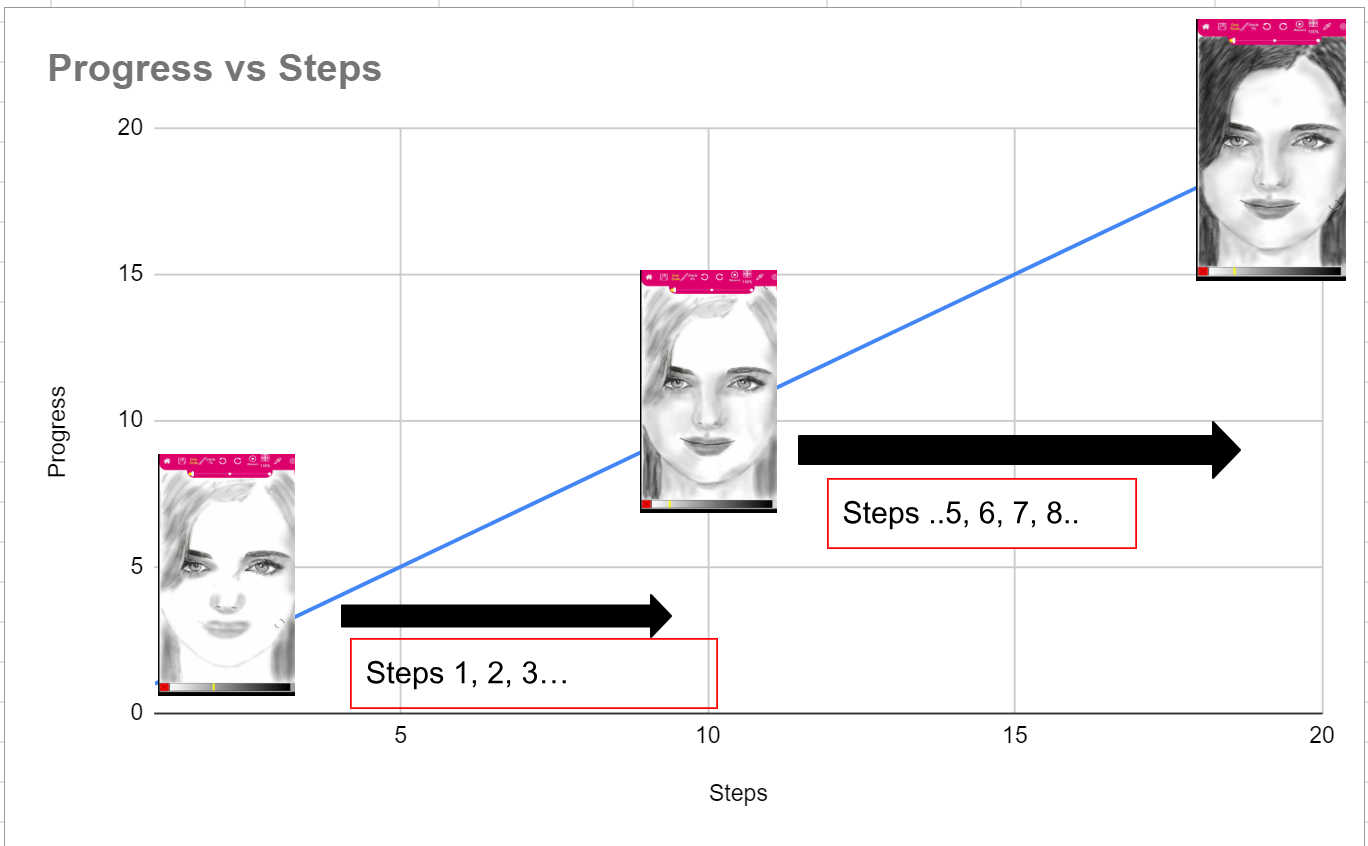


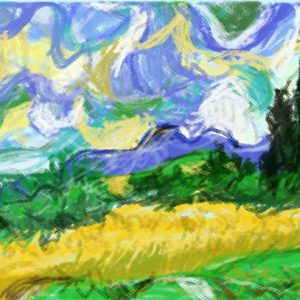


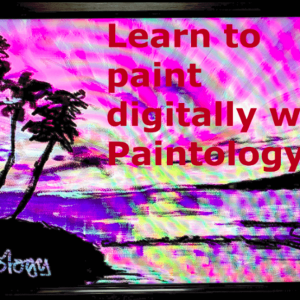

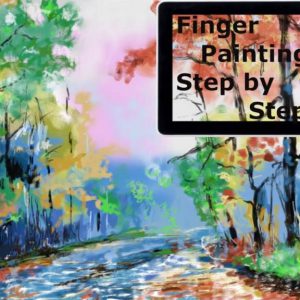

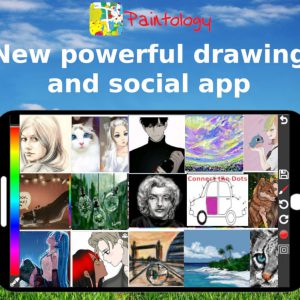
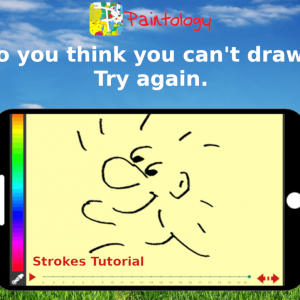
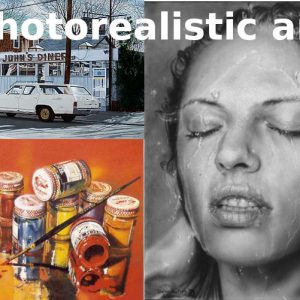

 Digital Canvas
Digital Canvas
Leave a Reply